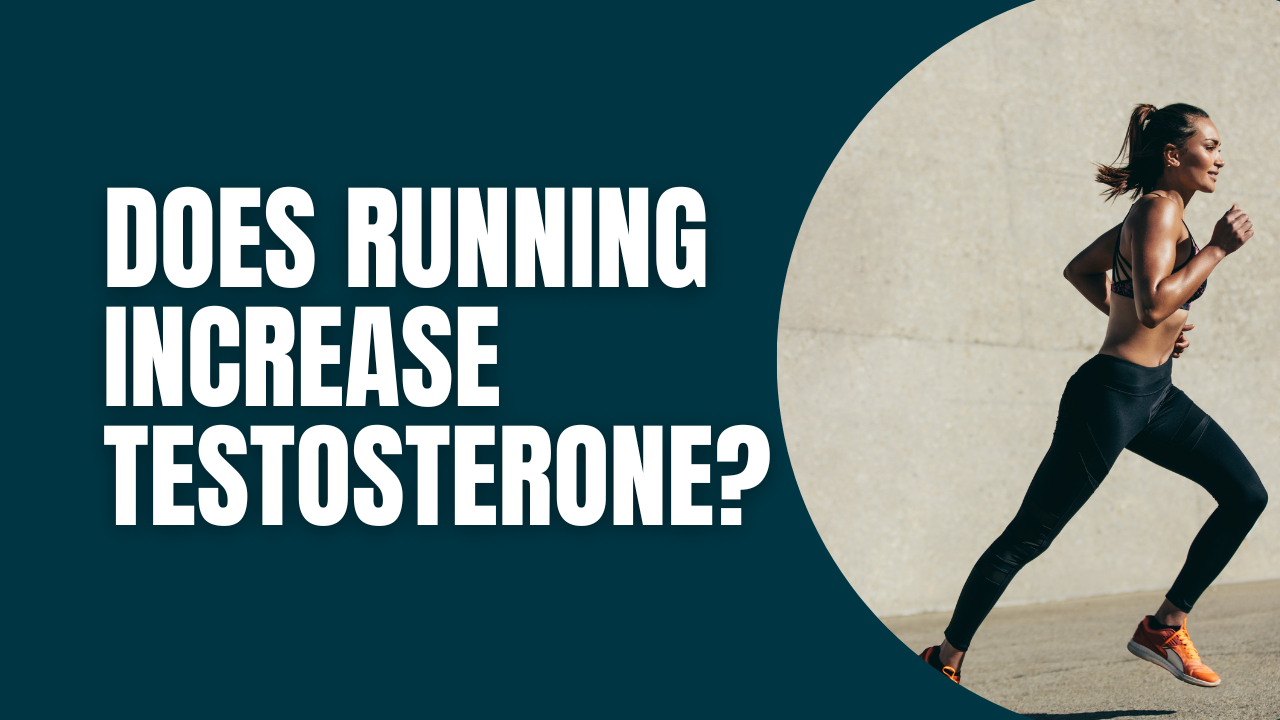Does Running Increase Testosterone? Science To Know!

If you are working on raising your testosterone levels, you probably already know the significance of exercise in supporting your efforts. However, the most common physical training that comes into the picture in this situation is resistance training and weightlifting and the least discussed one is endurance exercises like running.
While running has dozens of health benefits, the main question here is, whether it actually has a positive influence on testosterone levels or not. There are two schools of thought on this subject- while one group believes that running, like any other exercise, supports testosterone production, whereas, the other set of experts have a contradictory opinion.
So, to have a detailed understanding of the effect of running or endurance exercises in general on testosterone health, we went deeper into various research studies, and here’s what we found:
Impact Of Running On Testosterone
As mentioned earlier, running is a great way to stay fit, but its association with testosterone improvement is more specific. Studies have proven that high-intensity sprinting is noticeably more impactful in testosterone production. This means that it majorly depends on factors like the intensity, duration, and speed at which you run.
For example, a study was conducted on 12 professional handball players to find out the impact of high-intensity sprint exercises at short intervals (3 mins rest between each session) on their hormonal changes. One of the findings of the trial was a significant rise in testosterone levels among the athletes which proves the effectiveness of high-intensity running.
Similarly, in another comparative study from 2012, it was found that free testosterone increased more significantly after an intensive interval workout when compared to a steady-state training session.
The reason why high-intensity interval training yields a positive testosterone response is that they create a bodily state very similar to resistance training and therefore supports muscle development. Muscle mass in return promotes testosterone synthesis.
Now, while so far you have seen how high-intensity running can help boost testosterone levels, there are a couple of studies that show a reverse influence of long-term, regular running. One of the clinical trials from 2016 conducted to study the ‘Cortisol and testosterone dynamics’ after an extensive endurance workout session showed increased levels of cortisol and a decrease in free testosterone concentration.
Another research examination done on a group of endurance athletes also found that they had constant low testosterone levels in them as a result of long-term endurance training sessions like marathon practice etc. The hormone recovery time expected in these situations can also be extremely long as their body gets adapted to this kind of exertion.
How To Improve Testosterone With Running
So now that you have seen various scientific studies that show running can support testosterone production, here are some of the vital things to keep in mind to make it more impactful:
Practise High-Intensity Interval Running (HIIT)

As specified earlier, repeating short bursts of intensive runs (that last for 90 secs per session) with a brief period of recovery in between each session helps in raising testosterone levels significantly. Remember that you need to put in 80 to 100 percent of your energy in each running session and do this until exhaustion. In addition to that, you can add some other challenging exercises along with HIIT and recovery phases in between.
Remember To Stride
Striding is important after an intense interval of running as it not just prevents your body from straining but also gives a boost to the testosterone response. It also helps you to run faster at higher intensity helping you with your HIIT training.
Include Resistance Training
Resistance workouts like lifting weights or working out using resistance bands are one of the best exercises for combating low testosterone issues. It is a good idea to add some weights to your steady pace running to improve its production.
Appropriate Diet

No matter how active you are, your hormones are also dependent on your food habits. HIIT or strength exercises can be exhaustive. Therefore, maintaining the calories through the right diet is essential to reduce fatigue, faster recovery, and maintain proper energy levels at all times. Introduce food that is rich in nutrients, vitamins, and minerals which can help accelerate testosterone production.
Other Health Gains From Running
Running in general offers numerous health gains. It helps improve your stamina and increases endurance by making your bones and muscles strong. Aside from that, it can improve heart health, and blood circulation and promotes the proper functioning of the lungs. Running can also combat digestive issues by improving metabolism which in turn accelerates the fat-burning process and slims down your waistline.
As mentioned earlier, this form of endurance exercise, when done properly can help with hormone regulation efforts.
In addition to the physical benefits, running can be very effective in promoting mental well-being. It improves focus and elevates mood by releasing endorphins which in turn prevents issues like stress, anxiety, or depression. In short, it can help uplift your quality of life by keeping various ailments at bay.
Conclusion
With this, we come to the edge of the article. The association between running and testosterone is multifarious. After delving into various research studies, we can say that running can help regulate testosterone if they are done with a ‘high-intensity interval’ approach- short intense runs with recovery time in between. However, it can be more effective if you upgrade the correct type of running with a healthy diet and good sleep routine along with natural testosterone-improving supplements.
As always, do not hesitate to consult a healthcare practitioner if you are experiencing low testosterone for a long time and do not see improvements even after following the natural remedies.
